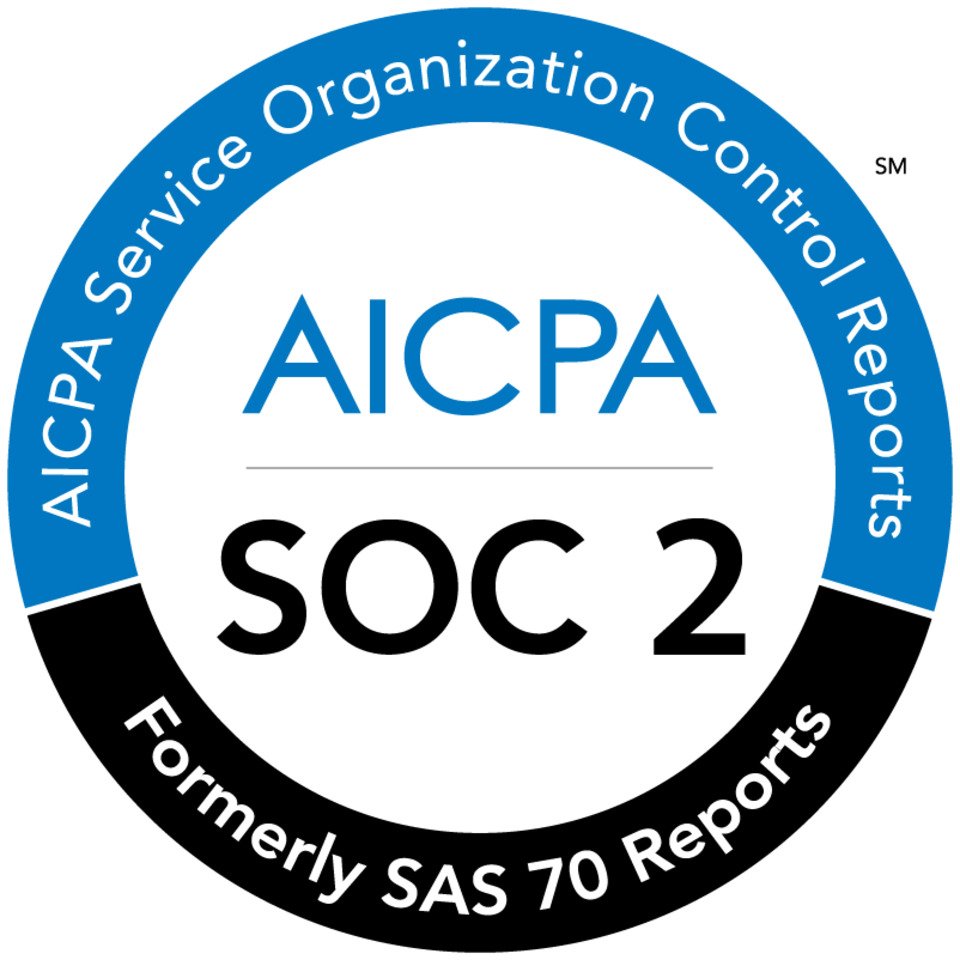AI Strategy & Regulatory Compliance Advisory
We partner with industry leaders



Industries That Benefit
Banking Institutions
Retail and commercial banks face intensive regulatory scrutiny around AI implementation while needing to maintain innovation pace to compete with fintech disruptors. Digital banks must establish credibility with regulators and financial partners while implementing AI across their core operations. Private banks require sophisticated AI governance that satisfies fiduciary obligations while enabling personalized wealth management services. Investment banks need clear frameworks for algorithmic trading and risk management AI that meet both regulatory expectations and performance requirements. Regulatory expectations including SR 11-7, GDPR, and fairness requirements create complex compliance challenges that often paralyze AI initiatives.
Our advisory services deliver:
- AI implementation roadmaps aligned with banking regulations
- Model governance frameworks satisfying examiner expectations
- Explainability approaches for credit, risk, and customer-facing AI
- Competitive differentiation through compliant innovation
Wealth & Asset Management
Wealth management firms increasingly deploy AI for client service and portfolio management while maintaining regulatory compliance and client trust in fiduciary relationships. Boutique firms lack the compliance resources to navigate complex AI regulations while competing with larger firms implementing sophisticated technology. Family offices need AI governance frameworks that address multi-generational client relationships and complex investment structures across multiple jurisdictions. Asset management firms require clear documentation for AI-driven investment decisions that satisfy both regulatory requirements and institutional investor due diligence. Pension funds and mutual funds face unique challenges implementing AI while maintaining transparency requirements and fiduciary obligations to beneficiaries.
Wealth managers gain:
- Implementation strategies for advisor-augmenting AI
- Governance frameworks for portfolio and recommendation engines
- Compliance approaches satisfying fiduciary requirements
- Client explanation capabilities for AI-driven recommendations
Investment Firms
Private equity and venture capital firms must implement AI capabilities that deliver performance advantages while satisfying investor due diligence and regulatory requirements across diverse portfolios. Hedge funds face complex regulatory requirements for algorithmic trading and risk management AI that must balance innovation with compliance obligations. Investment organizations struggle with traditional governance approaches that fail to address the unique characteristics and risks of AI systems in investment management. Real asset managers need AI governance frameworks that address complex valuation models and investment decision support across diverse asset classes. Impact investors require specialized approaches that address both financial performance and impact measurement through AI applications.
Investment teams gain:
- AI governance aligned with fiduciary responsibilities
- Implementation strategies balancing innovation and compliance
- Documentation satisfying institutional investor due diligence
- Clear frameworks for algorithmic trading and investment AI
Fintech Companies
Digital financial platforms face unique challenges implementing AI while establishing credibility with regulators and traditional financial partners who demand proven governance frameworks. Payment platforms and digital wallets must navigate complex regulatory requirements across multiple jurisdictions while scaling AI capabilities rapidly. Lending startups need sophisticated AI governance for credit decisioning that satisfies fairness requirements and regulatory expectations without extensive compliance resources. Crypto exchanges and BNPL platforms require governance frameworks that address emerging regulatory requirements while maintaining operational efficiency. RegTech and InsurTech firms must demonstrate responsible AI implementation to gain credibility with their financial services clients.
Fintech organizations receive:
- Growth-aligned compliance frameworks for AI applications
- Documentation supporting regulatory approvals and partnerships
- Scalable governance approaches appropriate for growth stage
- Competitive differentiation through responsible AI implementation
Capital Markets & Trading
Brokerages must implement AI governance frameworks that address algorithmic trading, risk management, and customer-facing applications while satisfying regulatory requirements across multiple jurisdictions. Market makers need sophisticated AI compliance approaches that address high-frequency trading algorithms and risk management systems under intense regulatory scrutiny. Securities exchanges require governance frameworks for AI applications that maintain market integrity while enabling technological innovation and competitive positioning. Prop trading firms must balance aggressive AI implementation for competitive advantage with comprehensive risk management and regulatory compliance requirements. Trading desks need practical AI governance that enables rapid deployment while maintaining appropriate oversight and documentation for regulatory examinations.
Capital markets operations achieve:
- Comprehensive governance for algorithmic trading and risk management AI
- Regulatory compliance frameworks for high-frequency and systematic trading
- Documentation satisfying exchange and regulatory requirements
- Competitive advantage through responsible AI implementation
Insurance & Risk Providers
Insurance companies implement increasingly sophisticated AI for underwriting, claims processing, and pricing while navigating complex regulatory requirements across multiple state and federal jurisdictions. General insurers face particular challenges with AI fairness requirements and consumer protection regulations that vary significantly across different markets and products. Life and health insurers must address both traditional insurance regulations and emerging AI-specific requirements while maintaining consumer trust and regulatory approval for AI-driven decisions. Reinsurers need governance frameworks that address complex risk modeling and underwriting AI across diverse global markets and regulatory environments. Digital insurers require scalable AI governance that maintains their operational efficiency advantages while establishing regulatory credibility and consumer confidence.
Insurance organizations benefit from:
- AI implementation roadmaps addressing insurance-specific regulations
- Governance frameworks for rating, underwriting, and claims AI
- Fairness testing methodologies for consumer-facing applications
- Documentation satisfying insurance regulatory examinations
Crowdfunding & Alternative Finance
Crowdfunding platforms face emerging regulatory requirements for AI applications in investor matching, risk assessment, and fraud detection across multiple regulatory jurisdictions. Real estate investment platforms must implement AI governance that addresses securities regulations, investor protection requirements, and complex property valuation models. Startup financing platforms need governance frameworks that satisfy both traditional securities regulations and emerging AI-specific requirements while maintaining operational efficiency. Alternative finance providers struggle with implementing AI compliance frameworks that address diverse lending regulations and consumer protection requirements across multiple products and markets. These platforms require scalable governance approaches that support rapid growth while establishing regulatory credibility and investor confidence.
Alternative finance operations receive:
- Governance frameworks addressing securities and lending regulations
- AI compliance approaches for investor protection and fraud detection
- Documentation supporting regulatory approvals and partner relationships
- Scalable compliance frameworks appropriate for platform growth stages
Corporate Finance & Treasury Divisions
Corporate finance teams implement AI for financial planning, risk management, and operational efficiency while ensuring compliance with financial reporting standards and audit requirements. Treasury departments need AI governance frameworks that address cash management, investment decisions, and risk modeling while maintaining fiduciary obligations and regulatory compliance. Internal finance teams face challenges implementing AI across diverse business units while maintaining consistent governance standards and regulatory compliance across multiple jurisdictions. Strategy and risk offices require sophisticated AI governance for decision support systems that impact major business decisions and regulatory reporting. These divisions must balance AI innovation with conservative financial management approaches and established governance frameworks.
Finance departments gain:
- AI governance frameworks aligned with financial reporting and audit requirements
- Implementation strategies for financial planning and risk management AI
- Documentation satisfying internal and external audit requirements
- Balanced approaches enabling innovation while maintaining fiduciary obligations
Problems or Missed Opportunities We Solve
Financial institutions frequently delay AI initiatives due to unclear regulatory expectations and compliance concerns. This hesitation creates competitive disadvantages while missing opportunities for efficiency and customer experience improvements.
Our approach:
- Provides clear interpretation of regulatory expectations
- Establishes practical compliance frameworks for moving forward
- Creates confidence in regulatory defensibility
- Enables progress despite evolving regulatory landscapes
Many organizations deploy AI without adequate governance structures, creating significant regulatory exposure and operational risks. These governance gaps frequently surface during examinations or after incidents occur.
Advisory services deliver:
- Comprehensive governance before deployment
- Documentation satisfying regulatory expectations
- Clear responsibilities across risk functions
- Sustainable compliance throughout AI lifecycle
Financial institutions struggle implementing AI explainability that satisfies both regulatory requirements and performance needs. Conventional approaches often sacrifice predictive power or create explanations that fail regulatory scrutiny.
The solution provides:
- Practical explainability appropriate to use case risk
- Techniques balancing performance and transparency
- Documentation meeting regulatory expectations
- Explanation approaches aligned with specific regulations
Organizations face increasing expectations for ethical AI implementation without clear methodologies or standards. These gaps create both regulatory and reputational risks that can significantly impact financial operations.
Clients benefit from:
- Practical frameworks for fairness assessment
- Documentation demonstrating ethical consideration
- Testing approaches for bias identification
- Governance structures incorporating ethical review
Many AI initiatives fail to deliver expected value due to poor strategic alignment, inadequate governance, or implementation approaches that ignore financial sector realities. These failures waste resources while creating organizational resistance to further innovation.
Advisory services ensure:
- Business-aligned AI implementation roadmaps
- Realistic governance appropriate to organization size
- Implementation approaches reflecting industry realities
- Sustainable adoption aligned with organizational capabilities
Case Study
Real Results from Financial Leaders

Firm



Certifications & Compliance



Benefits of Using the Solution
Accelerated Compliant Innovation
Implement AI capabilities with confidence and speed through clear governance and regulatory alignment. Financial institutions typically accelerate AI deployment timelines by 40-60% while maintaining regulatory compliance, gaining both competitive advantages and operational benefits.
Enhanced Regulatory Confidence
Sustainable Governance
Competitive Differentiation
Strategic AI Alignment
Ready to take your business to the next level?
Lorem ipsum dolor sit amet, consectetur adipiscing elit. Ut elit tellus, luctus nec ullamcorper mattis.
Process / Project Flow
Current State Assessment
The engagement begins with comprehensive evaluation of your organization’s AI initiatives, regulatory obligations, governance structure, and strategic objectives. This assessment identifies compliance gaps, governance needs, and implementation priorities based on your specific situation.
Regulatory & Strategic Alignment
Advisory specialists develop tailored recommendations that align your AI initiatives with both regulatory requirements and business objectives. This alignment phase establishes clear priorities, implementation approaches, and governance frameworks appropriate for your organization.
Governance Framework Development
Governance and compliance experts create comprehensive documentation, policies, and procedures for AI oversight and risk management. This framework development provides the structural foundation for compliant AI implementation.
Implementation Planning & Support
Strategic advisors help translate governance frameworks into practical implementation plans with clear responsibilities, timelines, and resource requirements. This planning phase ensures successful execution of governance recommendations.
Documentation & Regulatory Preparation
Compliance specialists develop comprehensive documentation satisfying regulatory expectations for AI governance, explainability, and risk management. This preparation ensures readiness for examinations and regulatory interactions.
Ongoing Advisory Support
Advisory teams provide continuing guidance as regulatory expectations evolve and AI implementations advance. This ongoing support ensures sustained compliance and governance effectiveness throughout your AI journey.
Why Aspagnul Is the Ideal Partner

Comprehensive Technology Stack
This proven infrastructure provides the performance, accuracy, and security that financial operations demand while eliminating the risks of piecing together solutions from multiple vendors.

Comprehensive Technology Stack
This proven infrastructure provides the performance, accuracy, and security that financial operations demand while eliminating the risks of piecing together solutions from multiple vendors.

Global Compliance Coverage
This comprehensive approach enables financial institutions to expand confidently into new markets without building compliance frameworks from scratch for each jurisdiction.

Rapid Implementation Methodology
This efficient methodology accelerates time-to-value while minimizing the operational disruption associated with verification system changes.

Proven Results & Guarantees
This accountability demonstrates our confidence in delivering measurable verification improvements for every client.
Why Aspagnul Is the Ideal Partner
Our advisory specialists include former financial regulators, compliance executives, and governance experts who understand both technical AI capabilities and the regulatory frameworks governing their use in financial services.

The team has successfully guided financial institutions through regulatory examinations, model validations, and compliance reviews related to AI implementation, providing guidance based on actual regulatory interactions rather than abstract interpretation.

This integrated perspective enables solutions that satisfy regulatory requirements while delivering business value—avoiding the common pitfall of compliance approaches that unnecessarily constrain innovation.

The team maintains active dialogue with regulatory bodies, participates in industry working groups, and monitors emerging frameworks to provide forward-looking guidance that anticipates regulatory developments.

Financial institutions benefit from governance approaches that have been tested through actual regulatory interactions rather than theoretical compliance frameworks.

Frequently Asked Questions
This fundamental tension represents the greatest challenge in financial AI implementation. Our approach addresses this balance through three complementary strategies: first, we implement risk-based governance that applies appropriate oversight based on use case risk rather than one-size-fits-all controls; second, we establish “innovation lanes” with clear guardrails that enable experimentation while maintaining appropriate boundaries; third, we develop documentation approaches that satisfy regulatory expectations without creating unnecessary implementation barriers.
This balanced approach typically enables 40-60% faster AI implementation compared to organizations without clear governance frameworks, while actually improving regulatory compliance. Financial institutions achieve both innovation objectives and regulatory confidence by establishing appropriate controls from the beginning rather than retrofitting governance after implementation.
Financial institutions face a complex regulatory landscape for AI implementation, with requirements varying by function and jurisdiction. Core requirements span several categories: model risk management (SR 11-7, OCC 2011-12), consumer protection (ECOA, FCRA, UDAAP), data privacy (GDPR, CCPA), and sector-specific obligations. Beyond these general frameworks, specific requirements apply by sector:
Banking faces intensive scrutiny around credit, risk, and consumer-facing AI with explainability expectations and fairness requirements. Investment firms must address algorithmic trading regulations, fiduciary obligations for AI-driven advice, and institutional investor due diligence requirements. Insurance companies navigate state-specific regulations around rating factors, underwriting transparency, and claims processing fairness. These varied requirements necessitate governance tailored to your specific sector and use cases rather than generic AI governance.
AI explainability represents a significant challenge, particularly for sophisticated models used in financial applications. Our approach implements practical explainability through a layered methodology: strategic model selection that considers explainability requirements during initial design, appropriate application of inherently interpretable models for high-risk use cases, supplemental explanation techniques for complex models, and comprehensive documentation of model behavior across diverse scenarios.
The specific approach varies based on use case risk and regulatory requirements—high-risk applications like credit decisioning require different explainability standards than operational applications with limited consumer impact. Our implementation methodology creates documentation specifically designed to satisfy regulatory expectations while providing practical explanations for business stakeholders and consumers. Financial institutions achieve both the transparency needed for regulatory compliance and the performance advantages of advanced AI through this balanced approach.
Effective AI governance requires frameworks specifically designed for financial applications rather than generic approaches. Our recommended structure establishes clear responsibilities across three lines of defense: first-line business and development teams maintain appropriate development standards and perform initial testing; second-line risk and compliance functions provide independent validation and ongoing monitoring; third-line audit provides periodic independent assessment of the overall framework.
This governance structure operates within a comprehensive policy framework covering model development standards, validation requirements, deployment controls, ongoing monitoring, and incident response procedures. Implementation includes clear documentation, committee structures, escalation procedures, and reporting mechanisms appropriate to your organizational size and complexity. Financial institutions benefit from governance that satisfies regulatory expectations while remaining operationally practical for your specific environment.
Financial AI applications require sophisticated fairness assessment beyond basic testing approaches. Our methodology implements a comprehensive framework: clear fairness definitions appropriate to the specific use case and regulatory context, segmented performance analysis across protected characteristics and intersectional categories, identification of appropriate benchmark comparisons, root cause analysis of identified disparities, and remediation approaches that balance fairness improvements against business objectives.
The implementation includes both technical testing methodologies and governance processes for fairness review, with documentation specifically designed to satisfy regulatory expectations around fair lending and equal treatment. This approach enables financial institutions to confidently deploy AI applications with demonstrated fairness while maintaining appropriate performance characteristics.
Implementation timeframes vary based on organizational size, complexity, and existing governance maturity. Typical financial institutions complete initial governance implementation within 12-16 weeks, with phased expansion as AI adoption grows. The process requires limited involvement from your team—usually 3-5 hours weekly from key stakeholders during framework development.
The implementation follows a prioritized approach, establishing critical governance elements for existing high-risk AI applications first, then expanding to comprehensive coverage. Ongoing maintenance typically requires 0.5-1.5 FTE depending on AI implementation scope, significantly less than the remediation resources required after regulatory findings. Financial institutions achieve appropriate governance with minimal disruption through this efficient, prioritized approach tailored to your specific environment and regulatory expectations.
Let’s get intouch
Great! We’re excited to hear from you and let’s start something special togerter. call us for any inquery.

